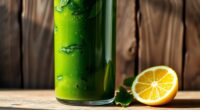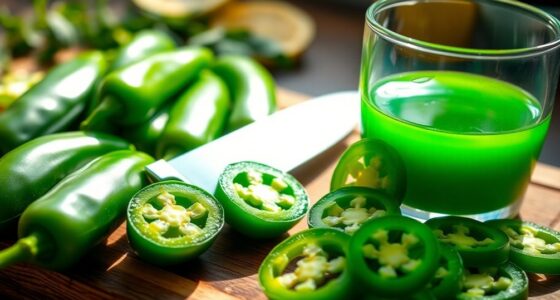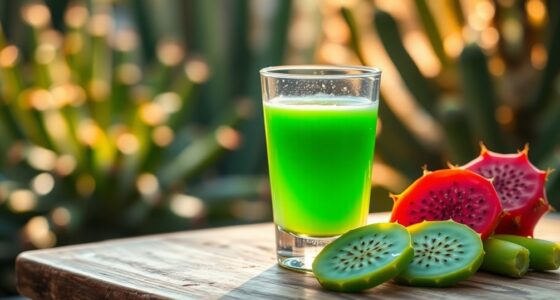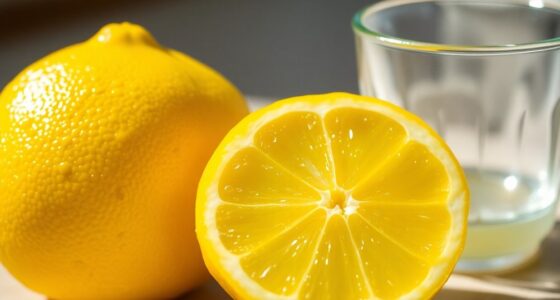To get cherry juice out of clothes, start by sponging the stain with cool water and blotting it with a clean cloth. Avoid rubbing to prevent spreading. Apply lemon juice or vinegar to break down the pigments, letting it sit for five minutes before rinsing. Next, rub heavy-duty liquid laundry detergent into the stain and let it sit for 15 minutes. If the stain lingers, an enzyme-based remover might help. Keep going to explore more tips!
Key Takeaways
- Act quickly by sponging the stain with cool water and blotting with a clean cloth to prevent spreading.
- Apply lemon juice or vinegar to the stain, letting it sit for five minutes before rinsing with cool water.
- Use a heavy-duty liquid laundry detergent, rubbing it into the stained area and letting it sit for at least 15 minutes.
- For stubborn stains, consider using an enzyme-based stain remover and soak the garment in warm water mixed with detergent and white vinegar.
- Rinse thoroughly with cool water and avoid drying until the stain is completely removed to prevent it from setting.
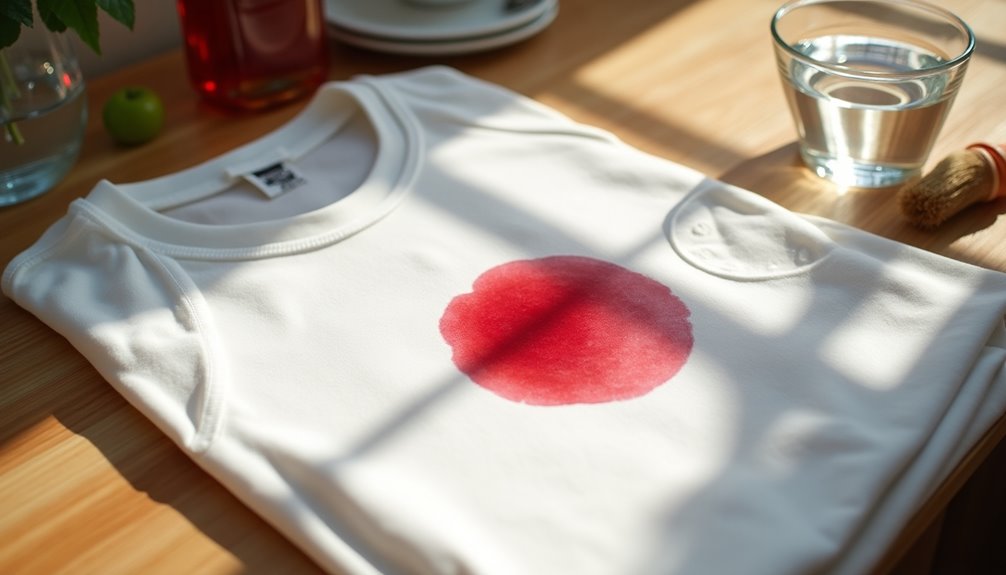
Got a cherry juice stain on your favorite shirt? Don't panic! You can tackle that pesky stain and restore your fabric to its former glory with some quick action and the right techniques. The key is to act fast and follow a few simple steps to remove cherry stains effectively.
First, you'll want to immediately sponge the stain with cool water. This helps prevent the cherry juice from setting into the fabric. The longer you wait, the more challenging it can be to remove the stain. So, grab a clean cloth or paper towel, and gently blot the area. Avoid rubbing, as this can spread the stain or push it deeper into the fibers.
Next, it's time to up the ante a bit. Apply lemon juice or vinegar directly to the stain. Both of these natural ingredients can break down the pigments in the cherry juice. Let it sit for about five minutes before rinsing with cool water. This step can significantly lighten the stain before you even reach for your laundry supplies.
Now, grab a heavy-duty liquid laundry detergent. Rub it into the stained area, making sure to cover it thoroughly. It's best to let the detergent sit for at least 15 minutes to allow it to penetrate the fabric and work on breaking down the stain. After that, you can wash the shirt as usual, following the instructions on the care label.
Always check the care label before you proceed, as some fabrics may require special treatment.
If the stain persists after washing, don't lose hope! You can try using an enzyme-based stain remover that contains pectinase. These products are specifically designed to tackle fruit stains like cherry juice. Apply it according to the manufacturer's instructions and let it work its magic.
Alternatively, soaking the garment in a solution of warm water, laundry detergent, and white vinegar for about 15 minutes can also work wonders in lifting the stain.
Once you've treated the stain, rinse the shirt thoroughly with cool water to remove any remaining cleaning agents. Be cautious not to dry the item until you're sure the stain is completely gone. Drying can set the stain permanently, making it much harder to remove.
If the stain is still visible, repeat the treatment process until you achieve the desired result.
Frequently Asked Questions
How Do You Get Red Juice Out of Fabric?
To get red juice out of fabric, start by sponging the stained area with cool water to dilute it.
Then, apply lemon juice or vinegar, letting it sit for about five minutes before rinsing.
For tougher stains, pre-soak the fabric in warm water mixed with detergent and white vinegar for 15 minutes.
After washing, check that the stain is completely gone before drying, as heat can set it permanently.
Does Oxiclean Remove Cherry Stains?
Yes, OxiClean can effectively remove cherry stains from fabrics.
To get the best results, you'll want to pre-soak the stained item in a solution of OxiClean and water, following the product's instructions for proper dilution.
Act quickly, as older stains are tougher to treat. Always test a small, hidden area first to avoid damage.
After soaking, wash the garment in the hottest water safe for the fabric to maximize stain removal.
How Do You Get Cherry Tomato Stains Out of Clothes?
To get cherry tomato stains out of clothes, start by blotting the stain with a plain white cloth to absorb the juice.
Pre-treat the area using lemon juice or vinegar, letting it sit for about five minutes.
Rinse it with cold water, then rub in a heavy-duty liquid laundry detergent and let it sit for at least 15 minutes before washing as usual.
For tough stains, try an enzyme-based stain remover.
How to Get Cherry Soda Out of Clothes?
When life's little spills happen, tackling those colorful mishaps quickly can save your favorite clothes.
To get cherry soda out of your garments, start by blotting the stain with a clean cloth. Rinse the fabric under cold water to push the stain out, then apply a mix of laundry detergent and water.
If needed, use a vinegar solution for stubborn stains. Finally, wash in the hottest safe water and air dry.
Conclusion
In the battle against cherry juice stains, remember that persistence pays off. Just like a gardener nurturing a young plant, you must tend to your clothes with care. If you act quickly and use the right methods, your favorite shirt can bloom back to its original state. So don't fret over those pesky stains; with a little patience and determination, you can cultivate a clean wardrobe and leave the cherry juice mishaps behind.
Cindy thoroughly researches juicing trends, techniques, and recipes to provide readers with practical advice and inspiration. Her writing style is accessible, engaging, and designed to make complex concepts easy to understand. Cindy’s dedication to promoting the advantages of juicing shines through her work, empowering readers to make positive changes in their lives through the simple act of juicing.


